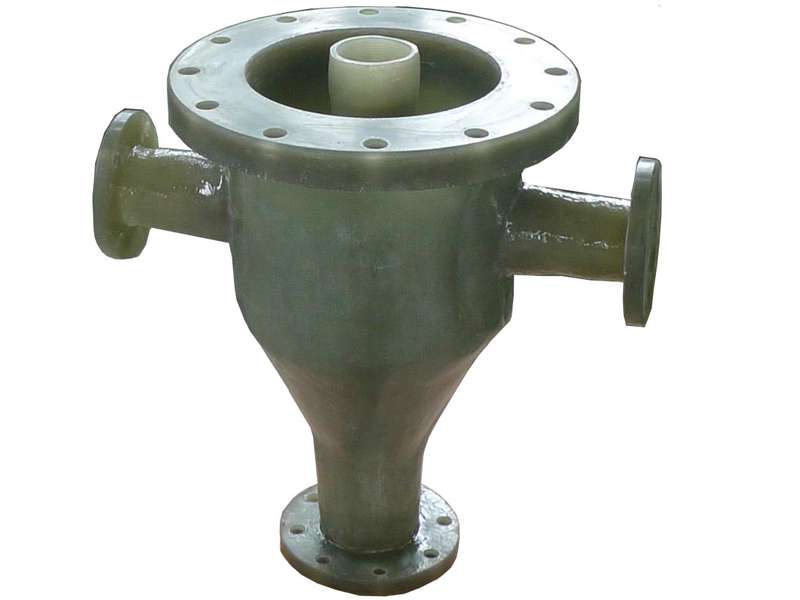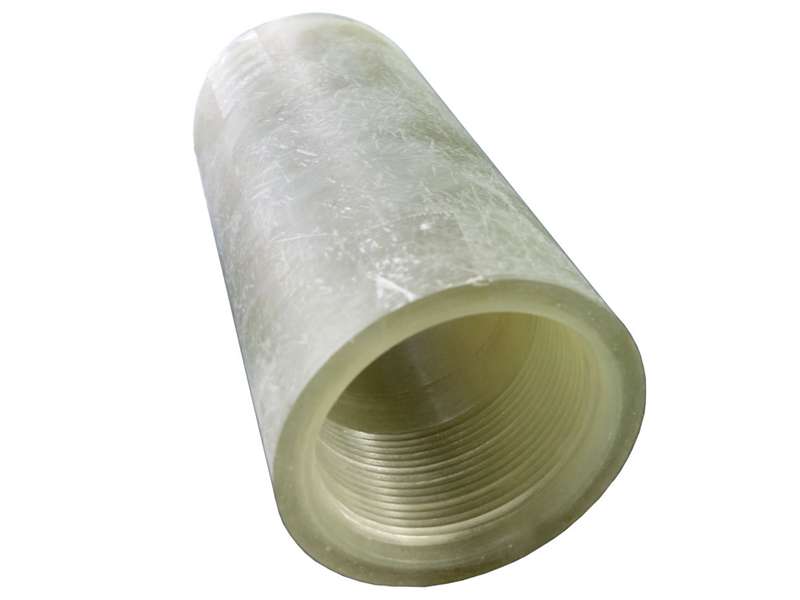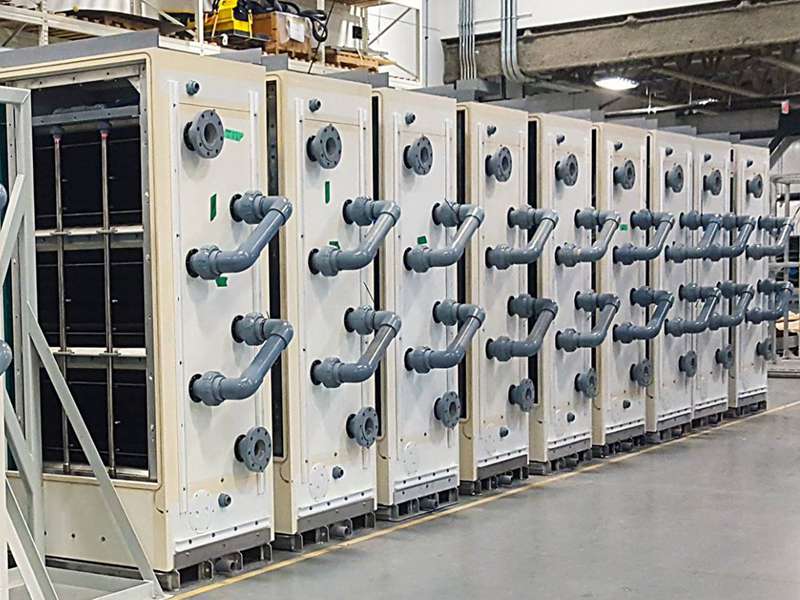
-
 Afrikaans
Afrikaans -
 Albanian
Albanian -
 Amharic
Amharic -
 Arabic
Arabic -
 Armenian
Armenian -
 Azerbaijani
Azerbaijani -
 Basque
Basque -
 Belarusian
Belarusian -
 Bengali
Bengali -
 Bosnian
Bosnian -
 Bulgarian
Bulgarian -
 Catalan
Catalan -
 Cebuano
Cebuano -
 China
China -
 China (Taiwan)
China (Taiwan) -
 Corsican
Corsican -
 Croatian
Croatian -
 Czech
Czech -
 Danish
Danish -
 Dutch
Dutch -
 English
English -
 Esperanto
Esperanto -
 Estonian
Estonian -
 Finnish
Finnish -
 French
French -
 Frisian
Frisian -
 Galician
Galician -
 Georgian
Georgian -
 German
German -
 Greek
Greek -
 Gujarati
Gujarati -
 Haitian Creole
Haitian Creole -
 hausa
hausa -
 hawaiian
hawaiian -
 Hebrew
Hebrew -
 Hindi
Hindi -
 Miao
Miao -
 Hungarian
Hungarian -
 Icelandic
Icelandic -
 igbo
igbo -
 Indonesian
Indonesian -
 irish
irish -
 Italian
Italian -
 Japanese
Japanese -
 Javanese
Javanese -
 Kannada
Kannada -
 kazakh
kazakh -
 Khmer
Khmer -
 Rwandese
Rwandese -
 Korean
Korean -
 Kurdish
Kurdish -
 Kyrgyz
Kyrgyz -
 Lao
Lao -
 Latin
Latin -
 Latvian
Latvian -
 Lithuanian
Lithuanian -
 Luxembourgish
Luxembourgish -
 Macedonian
Macedonian -
 Malgashi
Malgashi -
 Malay
Malay -
 Malayalam
Malayalam -
 Maltese
Maltese -
 Maori
Maori -
 Marathi
Marathi -
 Mongolian
Mongolian -
 Myanmar
Myanmar -
 Nepali
Nepali -
 Norwegian
Norwegian -
 Norwegian
Norwegian -
 Occitan
Occitan -
 Pashto
Pashto -
 Persian
Persian -
 Polish
Polish -
 Portuguese
Portuguese -
 Punjabi
Punjabi -
 Romanian
Romanian -
 Russian
Russian -
 Samoan
Samoan -
 Scottish Gaelic
Scottish Gaelic -
 Serbian
Serbian -
 Sesotho
Sesotho -
 Shona
Shona -
 Sindhi
Sindhi -
 Sinhala
Sinhala -
 Slovak
Slovak -
 Slovenian
Slovenian -
 Somali
Somali -
 Spanish
Spanish -
 Sundanese
Sundanese -
 Swahili
Swahili -
 Swedish
Swedish -
 Tagalog
Tagalog -
 Tajik
Tajik -
 Tamil
Tamil -
 Tatar
Tatar -
 Telugu
Telugu -
 Thai
Thai -
 Turkish
Turkish -
 Turkmen
Turkmen -
 Ukrainian
Ukrainian -
 Urdu
Urdu -
 Uighur
Uighur -
 Uzbek
Uzbek -
 Vietnamese
Vietnamese -
 Welsh
Welsh -
 Bantu
Bantu -
 Yiddish
Yiddish -
 Yoruba
Yoruba -
 Zulu
Zulu
Precision Fittings: Durable & Reliable Industrial & Plumbing Solutions
Understanding Industrial Fittings: Core Components for Critical Infrastructure
Industrial Fittings are indispensable components within vast industrial piping systems, facilitating the connection, control, and redirection of fluids and gases across diverse sectors. These critical elements ensure the integrity and efficiency of pipelines, playing a pivotal role in operational safety and system performance. From robust elbows and tees that manage directional changes to reducers and couplings that integrate varying pipe dimensions, the selection and deployment of appropriate Fittings are paramount for optimal infrastructure functionality. This comprehensive overview delves into the intricate world of industrial Fittings, exploring their manufacturing processes, technical specifications, application breadth, and strategic advantages in today's demanding operational environments.
Manufacturing Process Flow for High-Performance Fittings
The production of high-quality industrial Fittings is a meticulously controlled multi-stage process, ensuring components meet stringent performance and safety standards. The choice of materials, manufacturing techniques, and rigorous testing protocols are crucial for their long service life and reliability in demanding environments.
Materials Selection and Preparation:
- FRP (Fiber Reinforced Polymer): For exceptional corrosion resistance and lightweight properties, often used in chemical processing, water treatment, and marine applications. Composed of thermosetting resins (e.g., Isophthalic, Vinyl Ester) reinforced with glass fibers.
- Carbon Steel: Widely used for its strength and cost-effectiveness in general industrial applications, oil and gas, and power generation.
- Stainless Steel (e.g., 304, 316L): Chosen for superior corrosion resistance and hygiene requirements in food & beverage, pharmaceutical, and high-purity applications.
- Alloy Steels: For high-temperature, high-pressure, or cryogenic services.
Material incoming inspection includes chemical composition analysis, mechanical property testing, and non-destructive testing (NDT) to verify compliance with ASTM, ASME, and DIN standards.
Manufacturing Processes:
1. Raw Material Sourcing & Inspection
Verification against specifications (e.g., resin, fiber, metal alloys).
2. Forming (Casting/Forging/Winding)
- Casting: Molten metal poured into molds (e.g., for complex shapes, large diameters).
- Forging: Metal heated and shaped by compressive forces (e.g., for high-strength, ductility).
- FRP Hand Lay-up/Filament Winding: Resin-impregnated fibers applied over mandrels for FRP products.
3. Machining (CNC)
Precision machining using Computer Numerical Control (CNC) for accurate dimensions, threading, and surface finish. Critical for sealing surfaces and connection integrity.
4. Heat Treatment (for metallic fittings)
To optimize mechanical properties, relieve stress, and enhance corrosion resistance.
5. Surface Treatment (e.g., coating, passivation)
Protection against corrosion or for aesthetic purposes.
Quality Control and Testing Standards:
Every batch of Fittings undergoes rigorous testing to comply with international standards such as ISO 9001 for quality management, ANSI/ASME B16.9 (factory-made wrought Fittings) for dimensions and tolerances, and ASTM standards for material specifications. Key tests include:
- Hydrostatic Testing: To verify leak integrity under specified pressure.
- Non-Destructive Testing (NDT): Ultrasonic, radiographic, magnetic particle, or liquid penetrant inspection to detect internal and surface flaws.
- Dimensional Inspection: Ensuring conformity to design specifications.
- Material Traceability: Full traceability from raw material to finished product.
Service Life and Target Industries:
Well-engineered and properly installed industrial Fittings can offer a service life of 20-50 years, depending on material, application severity, and maintenance. Target industries include:
- Petrochemical and Oil & Gas: For conveying corrosive and abrasive hydrocarbons, acids, and alkalis.
- Water Supply & Drainage: For municipal water infrastructure, wastewater treatment, and desalination plants.
- Metallurgy & Mining: Handling slurries and highly abrasive materials.
- Power Generation: For cooling water, chemical dosing, and process lines.
- Chemical Processing: Where extreme corrosion resistance is paramount.
Advantages in Typical Application Scenarios:
- Corrosion Resistance: FRP Fittings excel in highly corrosive environments, significantly reducing maintenance costs and downtime compared to metallic alternatives. This is critical in chemical plants handling strong acids or bases, where traditional metals would rapidly degrade.
- Energy Saving: Smooth internal surfaces, particularly common in FRP Fittings, result in lower friction loss, reducing pumping power requirements and contributing to operational energy savings.
- Extended Service Life: By resisting degradation from chemical attack or environmental factors, these Fittings offer superior longevity, reducing replacement frequency and total cost of ownership.
- Lightweight: FRP Fittings are considerably lighter than steel, simplifying installation, reducing structural support requirements, and lowering transportation costs.

Industry Trends and Technical Advancements in Fittings
The industrial Fittings market is continuously evolving, driven by demands for increased efficiency, environmental sustainability, and enhanced safety. Key trends include the broader adoption of composite materials like FRP, advanced manufacturing techniques, and the integration of smart technologies.
- Sustainability and Eco-friendly Materials: A growing emphasis on Fittings manufactured from recycled materials or those with lower carbon footprints. FRP Fittings, with their long lifespan and resistance to leakage, contribute to reduced environmental impact.
- Digitalization and Industry 4.0 Integration: Advanced CAD/CAM software for precision design and manufacturing, alongside IoT sensors embedded in critical Fittings for real-time monitoring of pressure, temperature, and flow, enabling predictive maintenance and optimizing system performance.
- Modular and Pre-fabricated Solutions: To reduce on-site labor and installation time, there's a trend towards modular Fittings and pre-assembled sections, particularly for large-scale projects.
- High-Performance Composites: Continued innovation in FRP materials, including advanced resins and fiber architectures, to push the boundaries of pressure, temperature, and chemical resistance for Fittings.
Technical Specifications and Parameters:
The precise technical specifications of Fittings are critical for their correct application and system compatibility. These parameters dictate their suitability for specific operating conditions.
| Parameter | Specification/Range | Applicable Standards |
|---|---|---|
| Material Composition | Vinyl Ester Resin / Isophthalic Resin, E-glass fibers | ASTM D3299, ASTM D4097 |
| Nominal Diameter (DN) | DN 15 - DN 2000 (0.5" - 80") | ASME B16.5, EN 1092-1 |
| Pressure Rating (PN) | PN 6 - PN 25 (90 psi - 360 psi) | ASTM D1599, AWWA C950 |
| Temperature Range | -40°C to +110°C (-40°F to +230°F) | ISO 16135 |
| Corrosion Resistance | Excellent for strong acids, bases, salts, and organic solvents | ASTM C581 |
| Joint Type | Laminated Butt & Wrap, Flanged, Bell & Spigot | ASME B31.3 |
| Surface Finish | Smooth interior, low friction coefficient |

Application Scenarios and Technical Advantages
The versatility and robust performance of industrial Fittings allow for their deployment across an extensive range of demanding applications. Their technical advantages translate directly into operational efficiencies and significant cost savings for end-users.
Typical Application Scenarios:
- Chemical Processing Plants: Transporting acids (e.g., sulfuric, hydrochloric), bases, and aggressive organic solvents where metallic alternatives would quickly corrode. Fittings must withstand extreme pH and high temperatures.
- Wastewater Treatment Facilities: Conveying municipal and industrial wastewater, often containing a cocktail of corrosive chemicals, suspended solids, and biological agents. The long-term corrosion resistance of FRP Fittings reduces leakage and system failures.
- Desalination Plants: Handling highly saline water, brine concentrates, and various treatment chemicals. Materials like FRP are ideal due to their immunity to seawater corrosion.
- Power Generation (Flue Gas Desulfurization - FGD): In scrubbers and process lines managing abrasive slurries and corrosive flue gases.
- Mining and Mineral Processing: For slurry pipelines and chemical leaching circuits where abrasion and chemical attack are severe challenges.
Key Technical Advantages:
- Superior Corrosion Resistance: For FRP Fittings, this is a primary advantage. Unlike metals, FRP does not rust, pit, or suffer from galvanic corrosion, even when exposed to a broad spectrum of aggressive chemicals, extending system life and reducing the need for costly material upgrades or frequent replacements.
- High Strength-to-Weight Ratio: Especially true for composite Fittings, this allows for easier handling, reduced installation costs (less heavy lifting equipment), and lower structural support requirements compared to heavy metallic alternatives.
- Low Thermal Conductivity: FRP Fittings offer excellent insulation properties, minimizing heat loss or gain, which can be critical for maintaining process temperatures and reducing energy consumption for heating or cooling.
- Excellent Flow Characteristics: Smooth internal surfaces reduce friction loss, maintaining higher flow rates with less pumping energy, leading to significant operational cost savings over the system's lifetime.
- Chemical Inertness: Ensures no contamination of process fluids, vital for applications in food & beverage, pharmaceuticals, and high-purity water systems.
- Long Service Life with Minimal Maintenance: The inherent properties of materials like FRP lead to significantly longer operational lifespans under challenging conditions, drastically reducing maintenance expenditures and unplanned downtime.

Vendor Comparison and Customized Solutions
Selecting the right vendor for industrial Fittings is crucial for project success, requiring a balance of quality, reliability, cost-effectiveness, and service. Leading manufacturers distinguish themselves through adherence to international standards, comprehensive product ranges, and exceptional customization capabilities.
Key Differentiators in Vendor Selection:
- Certifications and Compliance: Reputable vendors hold certifications such as ISO 9001 (Quality Management), ISO 14001 (Environmental Management), and adhere to industry-specific standards like ASME, ASTM, AWWA, and DNV GL for marine applications.
- Material Expertise: A vendor's depth of knowledge in various materials (FRP, metals, plastics) and their suitability for specific chemical and physical environments.
- Manufacturing Capabilities: State-of-the-art facilities with advanced CNC machining, precision molding, and robust quality control processes.
- Technical Support and Engineering Services: Ability to provide detailed engineering drawings, stress analysis, fluid dynamics simulations, and installation guidance.
- Track Record and References: Years of experience in the industry, a portfolio of successful projects, and positive client testimonials.
Customized Fittings Solutions:
While standard Fittings cover most requirements, many industrial projects demand bespoke solutions due to unique process parameters, spatial constraints, or specific chemical exposures. Customization options include:
- Tailored Material Combinations: Specialized resin systems (e.g., Novolac Vinyl Ester) for extreme chemical resistance or specific temperature profiles.
- Non-Standard Dimensions and Angles: Producing Fittings with non-standard diameters, wall thicknesses, or unique bend angles to fit complex layouts.
- Integrated Components: Fabrication of Fittings with pre-attached flanges, nozzles, or specialized connections to reduce on-site welding or joining.
- External Coatings and Linings: Application of specific coatings for UV protection, abrasion resistance, or internal linings for ultra-high purity applications.
- Pressure and Vacuum Capabilities: Designing Fittings for specific low-pressure vacuum services or ultra-high pressure applications beyond standard ratings.
| Feature | FRP Fittings (e.g., Vinyl Ester) | Stainless Steel Fittings (e.g., 316L) |
|---|---|---|
| Corrosion Resistance | Excellent for a wide range of acids, bases, and salts; no galvanic corrosion. | Good for many environments, but susceptible to pitting, crevice corrosion in chlorides. |
| Weight | Very lightweight (approx. 1/4 - 1/5 of steel). | Heavy, requiring more robust support structures. |
| Installation | Easier handling, faster installation; typically joined by lamination or flanging. | Requires heavy lifting; typically welded or flanged. |
| Thermal Conductivity | Low (excellent insulator). | High (thermal conductor). |
| Cost (Material) | Higher initial cost for specialized resins, but lower total lifecycle cost in corrosive environments. | Lower initial cost for common grades, but higher maintenance in corrosive settings. |
| Maintenance | Minimal due to high corrosion resistance and long service life. | Requires more frequent inspection and potential replacement in aggressive media. |
Application Case Studies: Fittings in Action
Real-world applications demonstrate the tangible benefits and reliability of high-quality industrial Fittings. These case studies highlight effective problem-solving and long-term value creation for B2B clients.
Case Study 1: Chemical Plant Acid Transfer System
Client:
A major European chemical manufacturer producing phosphoric acid.
Challenge:
Their existing metallic Fittings in a 50% phosphoric acid transfer line were experiencing premature corrosion and leakage, leading to frequent maintenance and safety concerns. Temperatures ranged from 60°C to 80°C.
Solution:
Custom-fabricated FRP Fittings (elbows, tees, reducers) with a Vinyl Ester resin system were designed and supplied. These Fittings were engineered for the specific chemical concentration and temperature profile, adhering to ASTM D3299 standards.
Outcome:
- Eliminated corrosion-related leaks, enhancing operational safety and environmental compliance.
- Reduced maintenance costs by 70% over the first five years.
- Projected service life extended from 3 years (metallic) to over 20 years (FRP).
- Client feedback: "The transition to FRP Fittings was seamless, and the reliability has been outstanding. It's a testament to proper material selection."
Case Study 2: Municipal Wastewater Treatment Plant Upgrade
Client:
A large municipal wastewater treatment facility in North America.
Challenge:
Expansion of an aeration basin required numerous large-diameter Fittings for effluent lines. The environment was highly corrosive due to hydrogen sulfide gas and various chemical disinfectants. Installation space was confined, necessitating lightweight components.
Solution:
A full suite of FRP Fittings, including large-bore tees (DN 1000) and reducers (DN 1200x800), designed for buried and above-ground applications. The lightweight nature of the Fittings simplified handling in the restricted construction area.
Outcome:
- Successfully installed within schedule due to ease of handling and joining.
- Provided robust resistance to H2S corrosion, ensuring long-term structural integrity.
- Contributed to a projected 30-year operational life with minimal corrosive degradation.
Trustworthiness and Support: FAQ, Lead Time, Warranty
Frequently Asked Questions (FAQ):
Q: What is the primary advantage of FRP Fittings over metallic options?
A: The most significant advantage is superior corrosion resistance to a vast array of chemicals, along with a high strength-to-weight ratio, which simplifies installation and reduces structural support requirements. They also offer excellent insulation properties.
Q: How do you ensure the quality of your Fittings?
A: Our manufacturing process adheres to ISO 9001 standards. We conduct rigorous material inspection, in-process quality checks, and final product testing including hydrostatic, dimensional, and non-destructive evaluations to ensure compliance with international standards like ASME and ASTM.
Q: Can your Fittings be customized for specific project needs?
A: Absolutely. We specialize in customized solutions, including non-standard dimensions, specific resin formulations for unique chemical exposures, and integrated component designs to meet complex project specifications. Our engineering team works closely with clients to develop tailored solutions.
Lead Time and Fulfillment:
Standard Fittings typically have a lead time of 4-6 weeks from order confirmation, depending on volume and current production schedules. For highly customized or large-scale project Fittings, lead times will be provided with the project proposal, ranging from 8-16 weeks to accommodate design, material procurement, and specialized manufacturing processes. We maintain robust supply chain management to ensure timely delivery and work with trusted logistics partners for global shipping, offering DDU/DDP options where feasible.
Warranty Commitments:
We provide a comprehensive warranty on all our industrial Fittings, typically ranging from 1 to 5 years, depending on the product type and application. This warranty covers manufacturing defects and material failures under normal operating conditions as per product specifications. Detailed warranty terms are provided with each quotation and sale agreement, underscoring our commitment to product quality and customer satisfaction.
Customer Support and After-Sales Service:
Our dedication to client success extends beyond delivery. We offer extensive after-sales support, including technical assistance for installation and commissioning, troubleshooting, and maintenance guidance. Our team of experienced engineers is available for consultation, ensuring that your Fittings systems perform optimally throughout their lifespan. For urgent inquiries, a dedicated support line and email channel are available during business hours, with commitment to a 24-48 hour response time for critical issues.
References
- ASTM International. (n.d.). Standard Specification for Fiberglass (Glass-Fiber-Reinforced Thermosetting-Resin) Pipe. Retrieved from astm.org
- American Society of Mechanical Engineers. (n.d.). ASME B16.9: Factory-Made Wrought Buttwelding Fittings. Retrieved from asme.org
- International Organization for Standardization. (n.d.). ISO 9001: Quality management systems – Requirements. Retrieved from iso.org
- AWWA. (n.d.). AWWA C950: Fiberglass Pressure Pipe. Retrieved from awwa.org
Latest news
-
Precision Fittings: Durable & Reliable Industrial & Plumbing SolutionsNewsAug.25,2025
-
Practical Steps: Unlock Success with Our Proven GuidesNewsAug.24,2025
-
Transport Tanks: Safe, Durable & Efficient Liquid HaulingNewsAug.23,2025
-
High-Quality Piping Systems for Efficient Flow & DurabilityNewsAug.22,2025
-
High-Efficiency Insulation Tanks for Optimal Temperature ControlNewsAug.11,2025
-
Premium Oblate Tanks: Space-Saving & Efficient Liquid StorageNewsAug.10,2025









